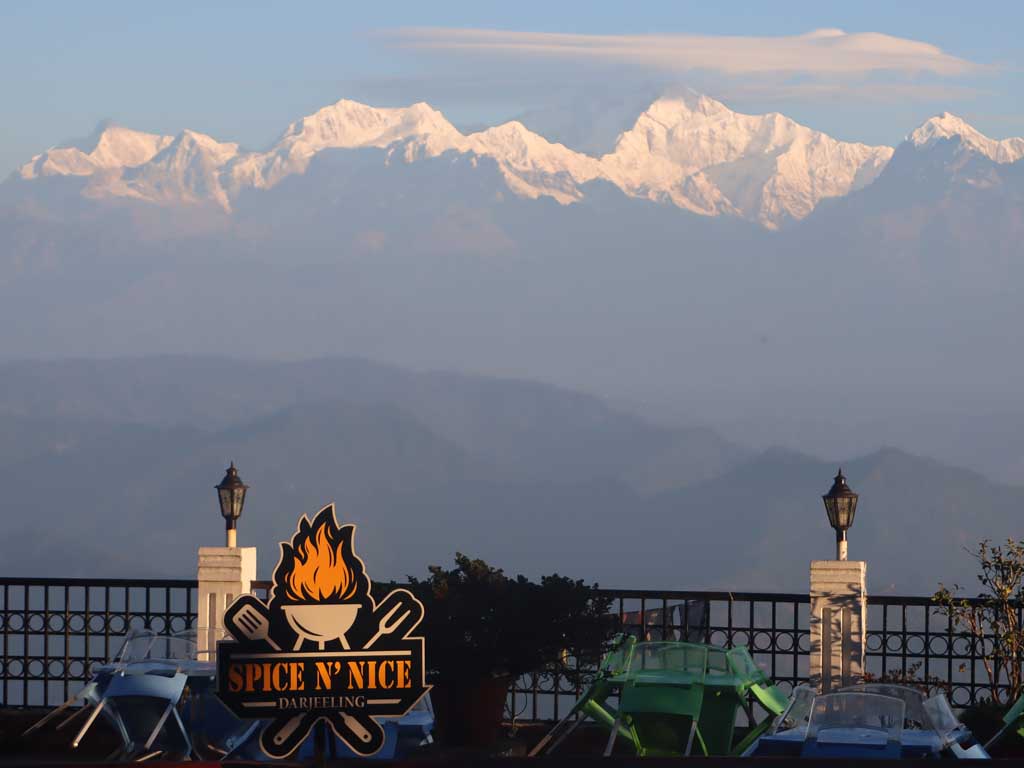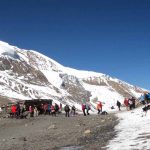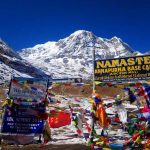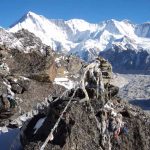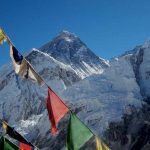Kanchenjunga, also called Kanchanjungha, located in Taplejung district, the far eastern region of Nepal. Taplejung district covers 3646 sq. km. in an area with an altitude ranging from 770m to 8586m above sea level. Kanchenjunga is the third highest mountain in the world with an elevation of 8,586m (28,169ft). It lies between east of Nepal and Sikkim, India. Until 1852, Kangchenjunga was assumed to be the highest mountain in the world. Kanchenjunga has outstanding topography followed by rich biodiversity and habitats of several rare species.
Taplejung is much diverse in terms of its ethnic, linguistic and cultural characteristics. Population mosaic of casts and ethnicity include various communities such as Sherpa, Limbu, Tamang, Gurung, Rai, Newar, Magar, Dhokpya, Walung, Sunuwar, Bahun, Kshetri. Each community possesses their own unique language and culture. They have mutual respect for their diverse religion, culture and dialects. The Mt. Kanchenjunga is the pride of Taplejung from where the first rays of the sun flashes to Nepal. Kanchenjunga is the third highest peak in the world and second in Nepal. The first mountaineer to scale Kanchanjunga was Georg Band who climbed it on May 25, 1995. In the Kanchenjunga range lie 11 major peaks with 7000 meters or above in elevation that include Kangawachan (7902m), Kumbhakarna (7710m), Jongsong (7483m), Yalung (7349m), Kiratchuli (7315m), Pyramid (7123m), Kumbhakarna (7090m), Timers (7004m). From these mountain peaks originate and flow a number of snow fed perennial rivers including Tamor, Kabeli, Mewa, Fawa, Tawa and Iwa. The region is also located by the Singhalila range, one of the most beautiful panoramas in the world.
Characteristics of Kanchenjunga area
Kanchenjunga region is a model physiographic in the world with the following exceptional features:
Several rare wild animal such as red panda (Ailurus fulgens), snow leopard (Panthera uncial) pangolin (Manis pentadactyla / Manis carssicaudata) leopard cat (Felis bengalensis), musk deer ( Moschus moschiferos) and rhesus monkey ( Macaca assamensis) inhabit in the region.
The Kanchenjunga is the habitat of more than 300 species of birds. Among them rare birds of the world like Wood Snipe (Gallinago namoricola), Maha cheel (Aquila heliacal), Satyr Tragopan (Tragopan satyra), Himalayan pheasant (Lophophorus impejeanus), Blood pheasant ( Ithaginis creantus), Common Raven (Corvus corax) and Common Green Magpie (Cissa Chinensis) are the major species.
More than 1000 flowering plant species have been discovered in Taplejung. Among them 810 are found in Kanchenjunga region only. The biggest juniper forest in Nepal lies in Taplejung and Lark Larix is a floral species endemic to this locality.
The Kanchenjunga region is also rich in medicinal and aromatic plants such as Chiraito (Swertia chirata), Kudki (Picrorhiza species), Bish (Aconitum species), Jatamasi (Nardostachys species), Ban Lasun (Allium species), Pakhanbed (Berginia ciliate), Panchaule (Dactelorthiza emodi), Silajit (Organic exodus), Yarsagumba (Cordyceps sinensis), Amala (Phyalanthus emblica), Lauth Salla (Taxus baccata), Sugandhawal (Valerina wallichi). Bojo (Acorus calamus), Rittha (Sapindus mucorosi), Majito (Rubia majith), Argheli (Edgeworthia gardneri), and Lokta(Daohne species), Dhupi (Juniperous scies), Sunpati (Dendrobium species) and Alaichi (Amomum subulatum). Kanchenjunga region has been popular for cottage industry products including Chhurpi (dried local cheese), Galaicha (Carpet), Radi, Pakhi, Dhaka, Nepali paper and Khukuri.
Various tempting spots lie including the famous Fungfunge water fall and the Tingbung, the Sodu and the Iwa wetlands, which are potential to entice tourists.
The Pathivara Devi, one of the famous religious shrines of Nepal, lies on the base of Kanchenjunga. Each year, a number of devotees from the eastern part of Nepal, Kalempong, Darjeeling, Sikkim and Assam give pilgrimage to the Pathivara Goddess. Situated at 3797m elevation, the Pathivara can also be a beautiful destination for other tourists willing to view unique natural landscape in addition to religious pilgrims. The district is also characterized by the Diki Chholing, the six hundred year old Buddhist monastery and the Faktalung, a holy place of Kirat community.
Despite rich biological, ethnic and cultural diversity with immense panoramic views, Kanchenjunga region in Taplejung is not so successful to attract domestic and international tourists. We should promote Kanchenjunga nationally and internationally to introduce our pride and prosperity.


